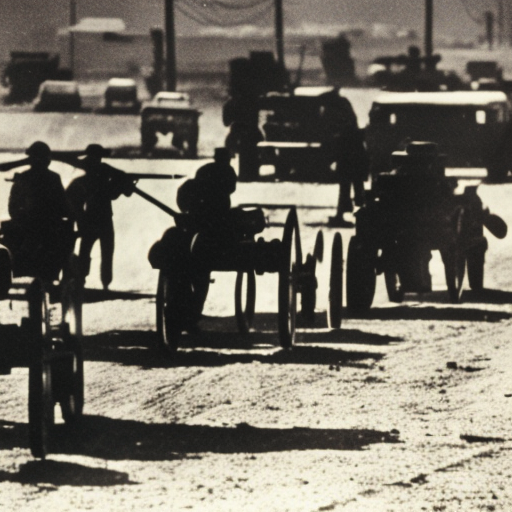The Iraq War: A Comprehensive Summary
The Iraq War, also known as the Second Gulf War, was a conflict that took place from 2003 to 2011 in Iraq. It was primarily fought between a coalition led by the United States and the Iraqi government under Saddam Hussein. The war had far-reaching consequences for Iraq, the Middle East, and the international community.
Background: The roots of the Iraq War can be traced back to the 1991 Gulf War, when a coalition led by the United States expelled Iraqi forces from Kuwait. In the aftermath of the war, the United Nations imposed sanctions on Iraq and established a system of weapons inspections to ensure Iraq’s compliance with disarmament obligations. However, tensions between Iraq and the international community persisted.
Buildup to War: The buildup to the Iraq War began in 2002 when the United States, under President George W. Bush, accused Iraq of possessing weapons of mass destruction (WMDs) and supporting terrorism. The U.S. government argued that Iraq posed a threat to regional stability and global security. Despite opposition from some countries and widespread protests, the United States and its allies sought to build international support for military action against Iraq.
Invasion and Toppling of Saddam Hussein: On March 20, 2003, a U.S.-led coalition launched a military invasion of Iraq. The initial phase of the war, known as the “shock and awe” campaign, aimed to quickly overthrow Saddam Hussein’s regime. Within weeks, Baghdad fell, and Saddam Hussein was deposed. However, the subsequent phase of the war proved to be more challenging.
Insurgency and Sectarian Violence: Following the fall of Saddam Hussein, Iraq descended into a period of intense violence and instability. An insurgency, mainly composed of Sunni Arab groups, emerged to challenge the U.S.-led coalition and the new Iraqi government, which was dominated by Shia Arabs. The insurgency was fueled by a combination of factors, including sectarian tensions, a power vacuum, and the presence of foreign fighters.
Role of Al-Qaeda and Rise of ISIS: The Iraq War provided fertile ground for the growth of extremist groups. Al-Qaeda, led by Abu Musab al-Zarqawi, established a presence in Iraq and carried out numerous attacks against coalition forces and civilians. The U.S. military’s response to the insurgency, including the mistreatment of detainees at Abu Ghraib prison, further fueled anti-American sentiment and recruitment for extremist groups. In the chaos that followed, the Islamic State of Iraq and Syria (ISIS) emerged as a major threat, seizing large swaths of territory in Iraq and Syria.
International Response and Withdrawal: The Iraq War sparked widespread international controversy and opposition. Many countries, including traditional U.S. allies, were critical of the decision to invade Iraq and questioned the legitimacy of the war. Over time, as the violence escalated and the human cost became apparent, public opinion turned against the war. In 2011, the United States officially ended its combat mission in Iraq, although a small number of American troops remained in the country for several more years.
Legacy: The Iraq War had a profound and lasting impact on Iraq, the Middle East, and the world. The war resulted in the deaths of hundreds of thousands of Iraqis, the displacement of millions, and the destruction of infrastructure. It also exacerbated sectarian tensions, leading to a protracted civil war in Iraq. The war’s consequences continue to be felt today, with Iraq facing ongoing challenges in terms of security, governance, and reconstruction.
In conclusion, the Iraq War was a complex and controversial conflict that had significant ramifications for Iraq and the wider region. It was marked by the overthrow of Saddam Hussein, the rise of insurgencies and extremist groups, and the destabilization of Iraq. The war’s legacy continues to shape the political, social, and economic landscape of Iraq and serves as a reminder of the complexities and consequences of military interventions.












